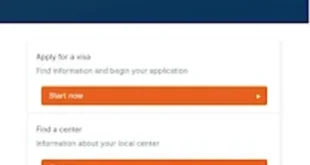The Taxi Wars in Thailand: A System on the Brink
The taxi wars in Thailand have escalated into a crisis that demands immediate attention. What began as a simple conflict between traditional taxi drivers and app-based ride-hailing services has evolved into a broader issue reflecting an outdated, fragmented transportation system. This situation is not just an urban nuisance—it’s a sign of a system in disarray that needs urgent reform.
A Shift in Transportation Dynamics
For years, hailing a taxi meant waving down a vehicle on the street. The process was unpredictable, with fares often negotiated on the spot. However, the rise of technology has transformed how people move around cities. GPS-based pickup services made it easier for passengers to find rides without needing to flag one down. Then came the surge of ride-hailing apps, which introduced price transparency, driver ratings, and user reviews—revolutionizing the industry overnight.
Traditional taxi drivers were caught off guard by this shift. Private cars quickly entered the market through these platforms, capturing significant market share, especially during peak hours. This change is not unique to Thailand; similar trends are seen globally. In Singapore, for instance, daily taxi rides dropped from 400,000 in 2017 to just 66,000 today, while app-based rides now exceed 528,000 per day.
In Thailand, new taxi registrations have also declined sharply. From 8,000-15,000 annually between 2012 and 2019, the number fell below 4,000 since 2020. This decline reflects a growing preference among passengers for app-based services, driven by complaints about traditional taxis refusing passengers, inflating fares, or providing poor service.
Financial Pressures on Traditional Taxis
Taxi drivers face immense financial challenges. Fares have not kept up with rising costs. Daily car rentals can range from 700-1,000 baht, and fuel expenses add to the burden. A standard taxi model like the Toyota Altis consumes about 2 baht per kilometer in fuel, excluding other expenses. Despite this, taxi fares remain regulated, starting at 35 baht and increasing by 6.5 baht per kilometer from 2 to 10 km. On a 10-kilometre ride, a taxi must complete 9 to 13 trips per day just to break even on rental and fuel—without accounting for meals, downtime, wages, or empty returns.
Even when adjusted, taxi fares lag far behind inflation. Using 1992 as the base year, where both taxi fares and the consumer price index (excluding food and beverages) started at 100, by 2022, fares had risen to just 155, while the CPI had reached 218. This means taxi fares have increased by only 55% since 1992, while the cost of living has jumped by 118%.
This imbalance has led many drivers to resort to charging flat rates or cutting corners, further eroding public trust. These practices push more passengers toward ride-hailing apps, which offer convenience, reliability, and dynamic pricing—factors that users increasingly value.
The Risks of Ride-Hailing Apps
While ride-hailing apps have gained popularity, they come with their own set of challenges. One major issue is the use of “illegal taxis”—private cars operating as public transport without proper registration. Today, tens of thousands of such vehicles operate on apps, but fewer than 5,000 are officially registered as public service vehicles. The rest function in a legal grey zone.
Many app drivers avoid registration to escape higher costs, such as loan interest, expensive insurance, or lower resale value. As a result, they are not held to the same safety and legal standards as registered taxis. This creates risks for passengers, who may be in poorly maintained or outdated vehicles without proper insurance coverage.
Additionally, most app drivers do not hold public transport licenses. Since 2022, only 20,000 such licenses have been issued—a tiny fraction of those providing rides. This leaves a large portion of the industry operating outside the law, creating a ticking time bomb for public safety.
Fragmented Oversight and the Need for Reform
The responsibility for fixing this broken system remains unclear. Multiple government agencies are involved, but no single entity has full authority over all aspects of the industry. The Department of Land Transport (DLT) oversees vehicles and drivers, while the Electronic Transactions Development Agency (ETDA) regulates the apps and their operators. This fragmentation leads to poor regulation and an uneven playing field for those trying to compete fairly.
A short-term solution could involve better cooperation between the DLT and ETDA. However, whether this will happen quickly enough remains uncertain. Without clear, decisive rules, the taxi wars will continue to escalate, affecting not just drivers and passengers but the entire transportation ecosystem.
The battle between taxis and apps is no longer just about fares, technology, or market share. It’s about fairness, safety, and public trust. Without reform, the road ahead will remain congested—and potentially dangerous.
 Info Malang Raya Its All About World News
Info Malang Raya Its All About World News




